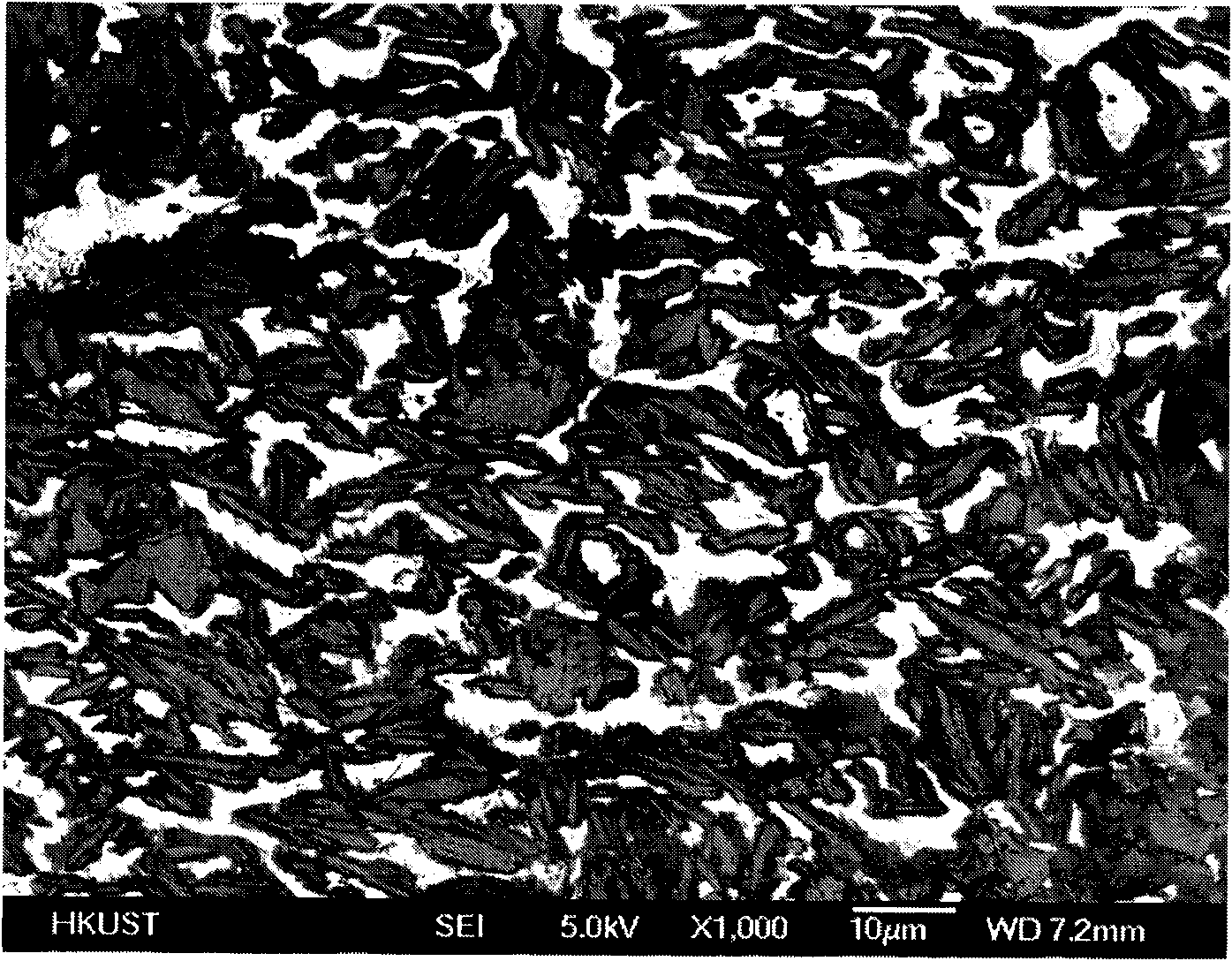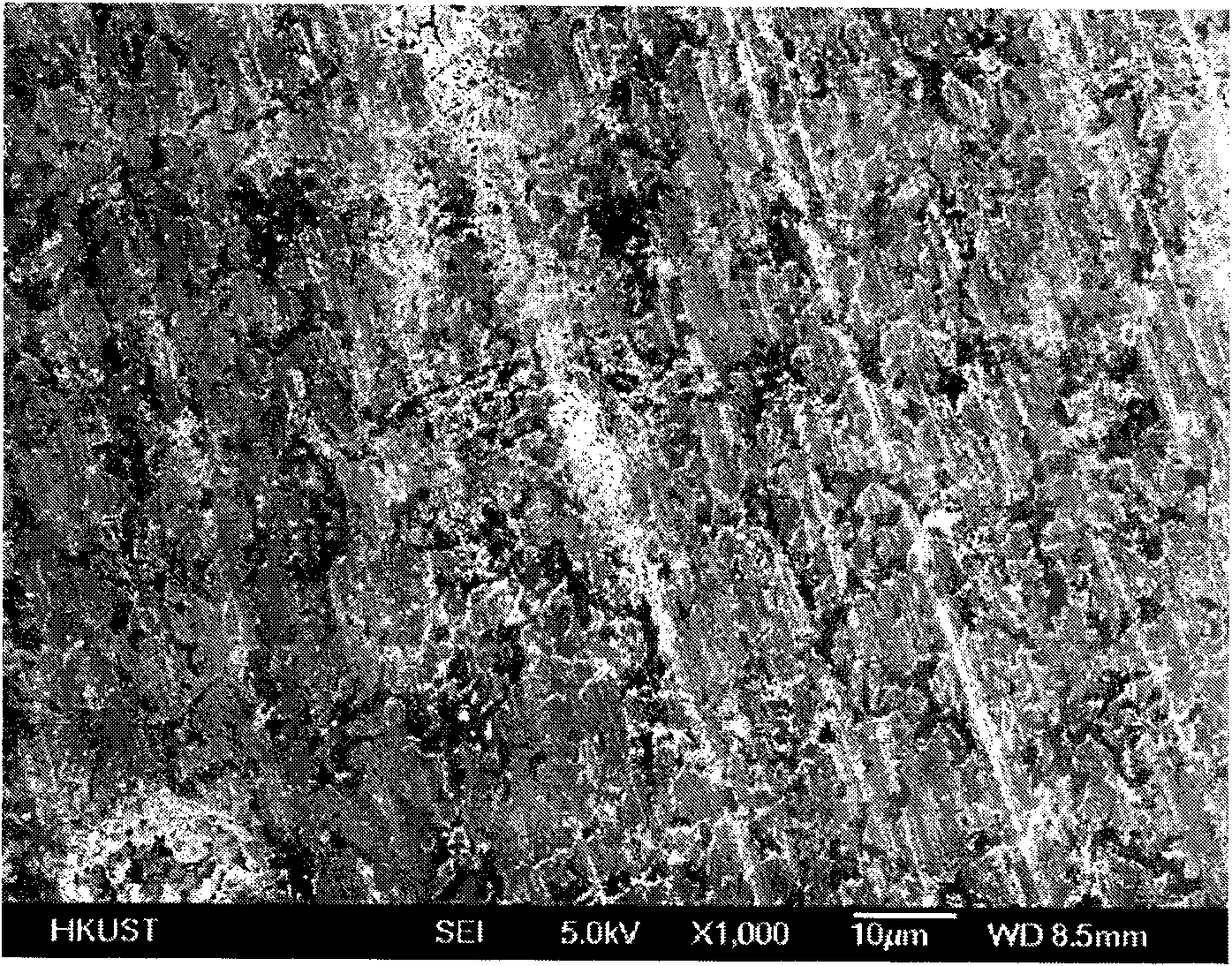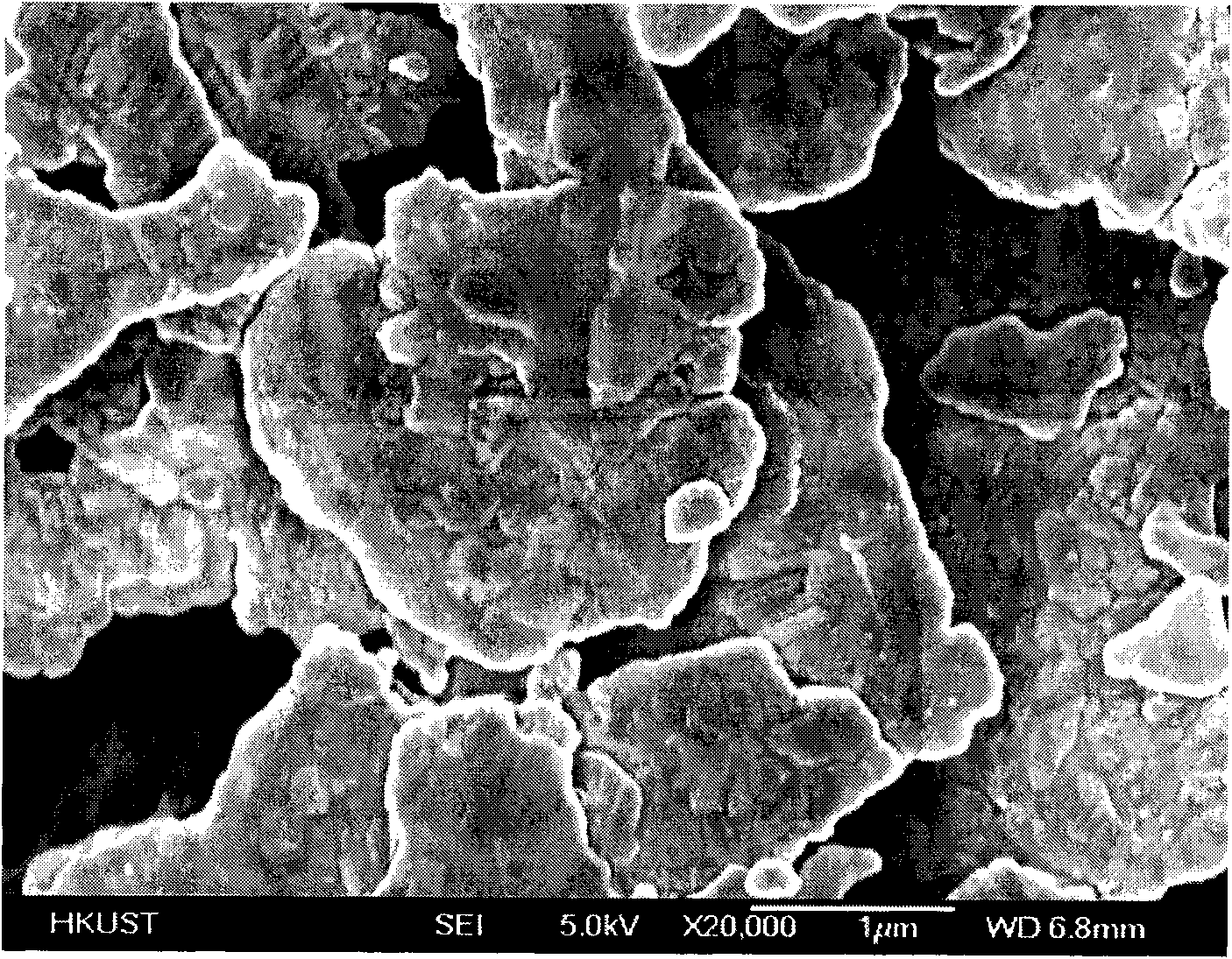Percolation efficiency of the conductivity of electrically conductive adhesives
A technology of conductive adhesive and conductive filler, applied in the field of conductive adhesive, can solve problems such as increased contact resistance and high viscosity of conductive adhesive
- Summary
- Abstract
- Description
- Claims
- Application Information
AI Technical Summary
Problems solved by technology
Method used
Image
Examples
Embodiment 1
[0044] Example 1-Surface modification of conductive filler
[0045] 10 grams of micron-sized silver flakes (about 5.6 microns in diameter) were dispersed in 100 ml of ethanol solution (containing 0.02% by weight of iodine). The solution was slowly stirred and mixed for 30 minutes at room temperature. The solution was then filtered through filter paper, and the filter cake was washed 3 times with ethanol. The filter cake was vacuum dried at room temperature until it was completely dry.
[0046] Preparation of modified conductive adhesive: The following data is based on a silver-containing adhesive formulation with a silver content of 75% by weight. In fact, the content of conductive filler can be within a wide range by adjusting the ratio of filler weight and resin matrix.
[0047] Mix 8.2 grams of dry silver flakes with 1.5 grams of bisphenol A epoxy resin (EPON 828) and 1.3 grams of methyl tetrahydrophthalic anhydride (MTHPA) for 30 minutes under high-speed stirring (the stirri...
Embodiment 2
[0049] Example 2-Sodium chlorite surface modifier
[0050] The modified conductive adhesive was prepared using the same steps as in Example 1, but the surface modifier was sodium chlorite instead of iodine. 10 grams of micron-sized silver flakes (about 5.6 microns in diameter) were dispersed in 100 ml of ethanol solution (containing 0.02% by weight of sodium chlorite). The solution was slowly stirred at room temperature for 30 minutes. The solution was filtered through filter paper and the filter cake was washed 3 times with ethanol. After that, the filter cake was vacuum dried at room temperature until it was completely dry.
Embodiment 3
[0051] Example 3-Bromine surface modifier
[0052] The modified conductive adhesive was prepared using the same steps as in Example 1, but the modifier was bromine instead of iodine. 10 grams of micron-sized silver flakes (about 5.6 microns in diameter) were dispersed in 100 ml of ethanol solution (containing 0.025% by weight of bromine). The solution was slowly stirred at room temperature for 30 minutes. The solution was filtered through filter paper and the filter cake was washed 3 times with ethanol. After that, the filter cake was vacuum dried at room temperature until it was completely dry.
PUM
| Property | Measurement | Unit |
|---|---|---|
| Thermal expansion coefficient | aaaaa | aaaaa |
| Thickness | aaaaa | aaaaa |
| Volume resistivity | aaaaa | aaaaa |
Abstract
Description
Claims
Application Information
 Login to View More
Login to View More - R&D
- Intellectual Property
- Life Sciences
- Materials
- Tech Scout
- Unparalleled Data Quality
- Higher Quality Content
- 60% Fewer Hallucinations
Browse by: Latest US Patents, China's latest patents, Technical Efficacy Thesaurus, Application Domain, Technology Topic, Popular Technical Reports.
© 2025 PatSnap. All rights reserved.Legal|Privacy policy|Modern Slavery Act Transparency Statement|Sitemap|About US| Contact US: help@patsnap.com



